Introducing App Activities!
Now that all MLC Math Apps have sharing capabilities, we’ve launched an App Activities page on the newly redesigned MLC website. There, teachers can find a repository of app-based problem-solving tasks to engage and challenge students. You can search by keyword or filter by grade level, topic, or app to find an appropriate problem-solving task for your students.
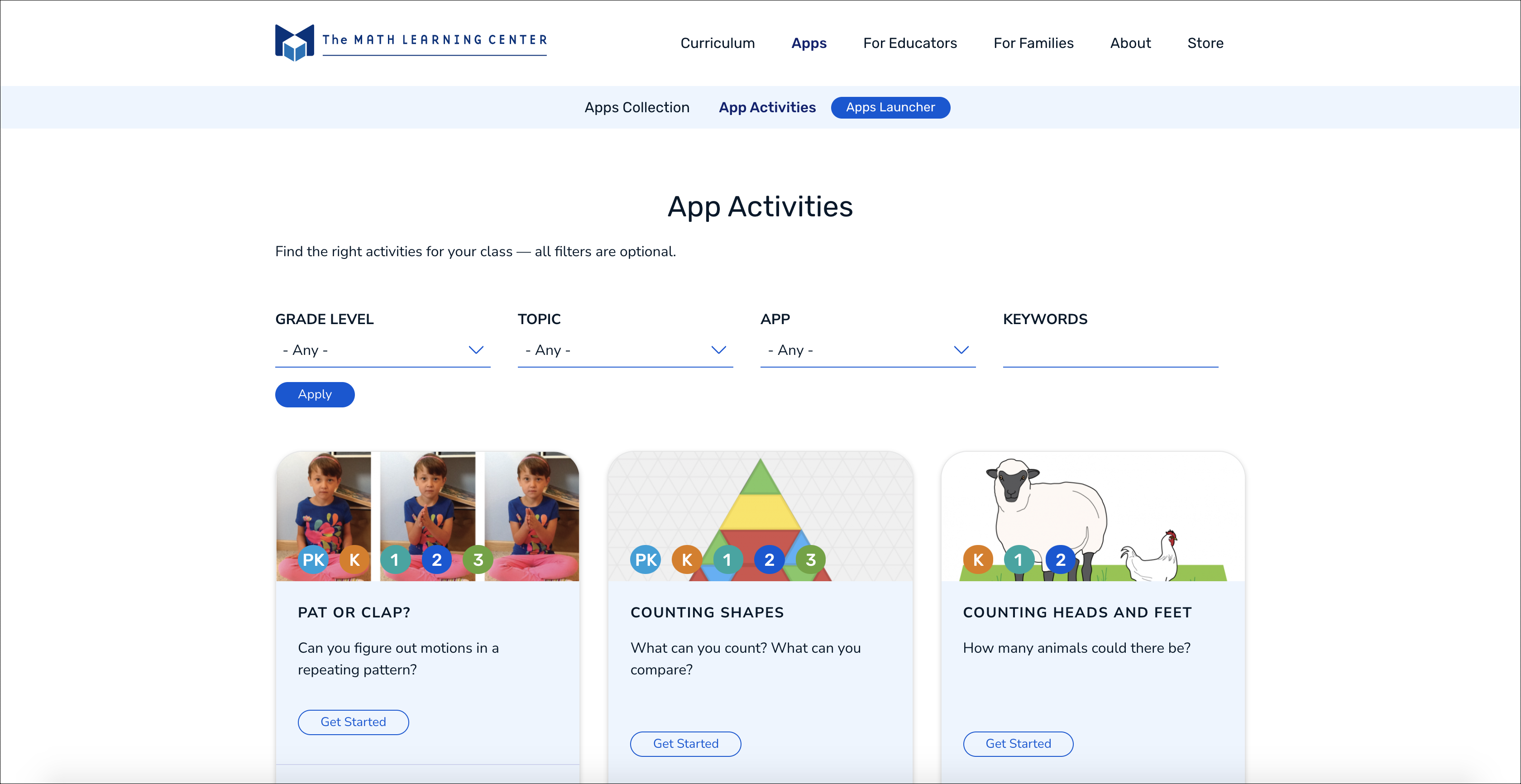
While I encourage you to explore each of the App Activities (because, why wouldn’t you?), I'd like to share three of my favorites to give you a sense of the deliberate approach that was used when creating them.
Lunchtime
This K–1 activity uses the everyday context of friends sitting at two tables during lunchtime. It explores various ways to decompose a familiar quantity, 8, within a problem-solving situation. Students may consider which combinations of 8 work for this situation and which may not meet the tasks’ constraints. Additionally, they may bring their own social experiences to understand and interpret the task as they consider groups of peers at lunch tables.
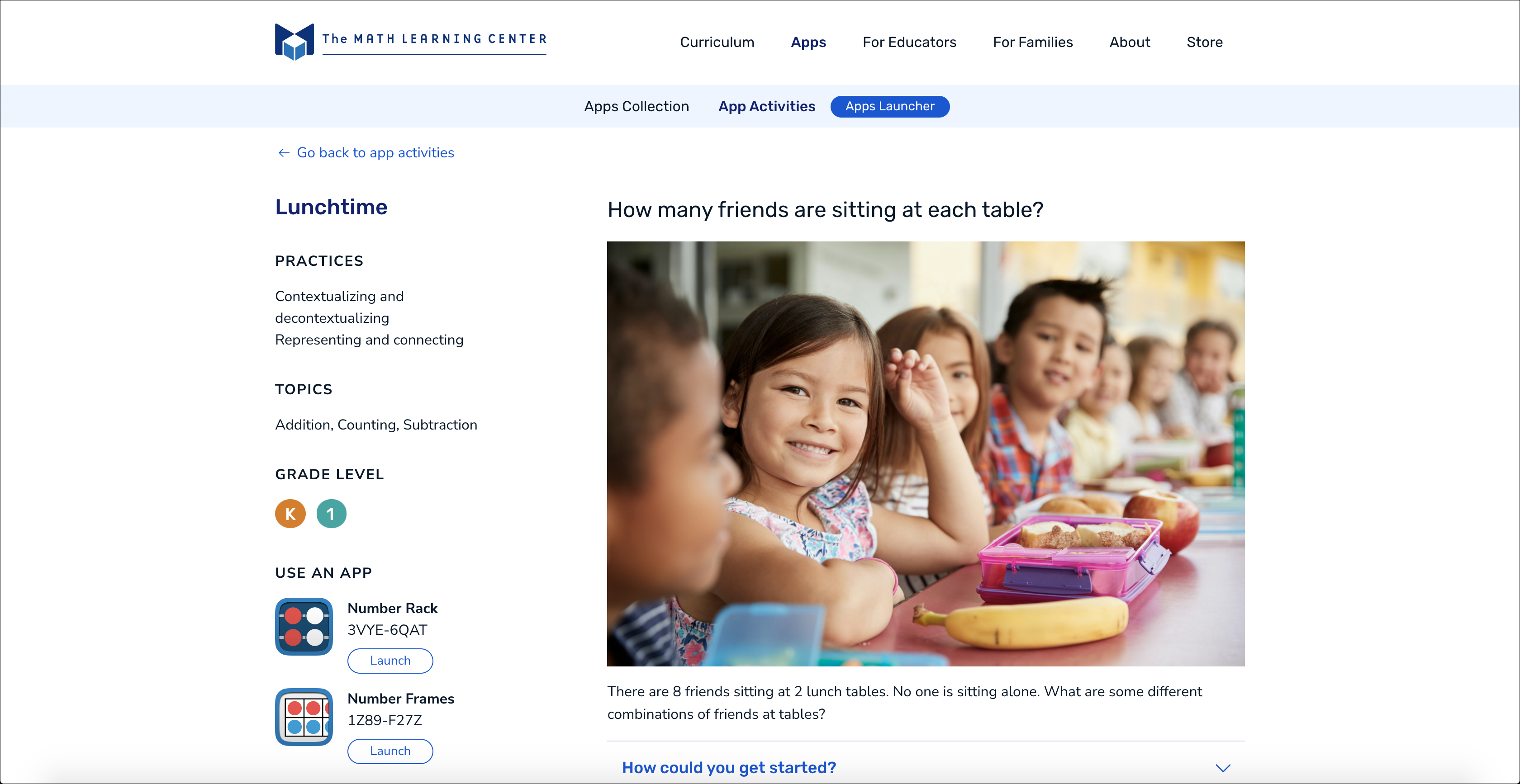
A deliberate part of the App Activities design was giving students choice in how they solve the problem. For most App Activities, students are given the choice of various tools within different apps to solve the problem. Watch for how students use these tools to represent the situation. In the Number Rack app, for example, students may use beads on separate rows to represent students sitting at two different tables. The image below illustrates one possible solution. From this known combination of 8, a student could add and subtract from the rows to find other solutions. Students may be encouraged to find all possible solutions or challenge themselves with opportunities for extension in “Ready to explore more?”
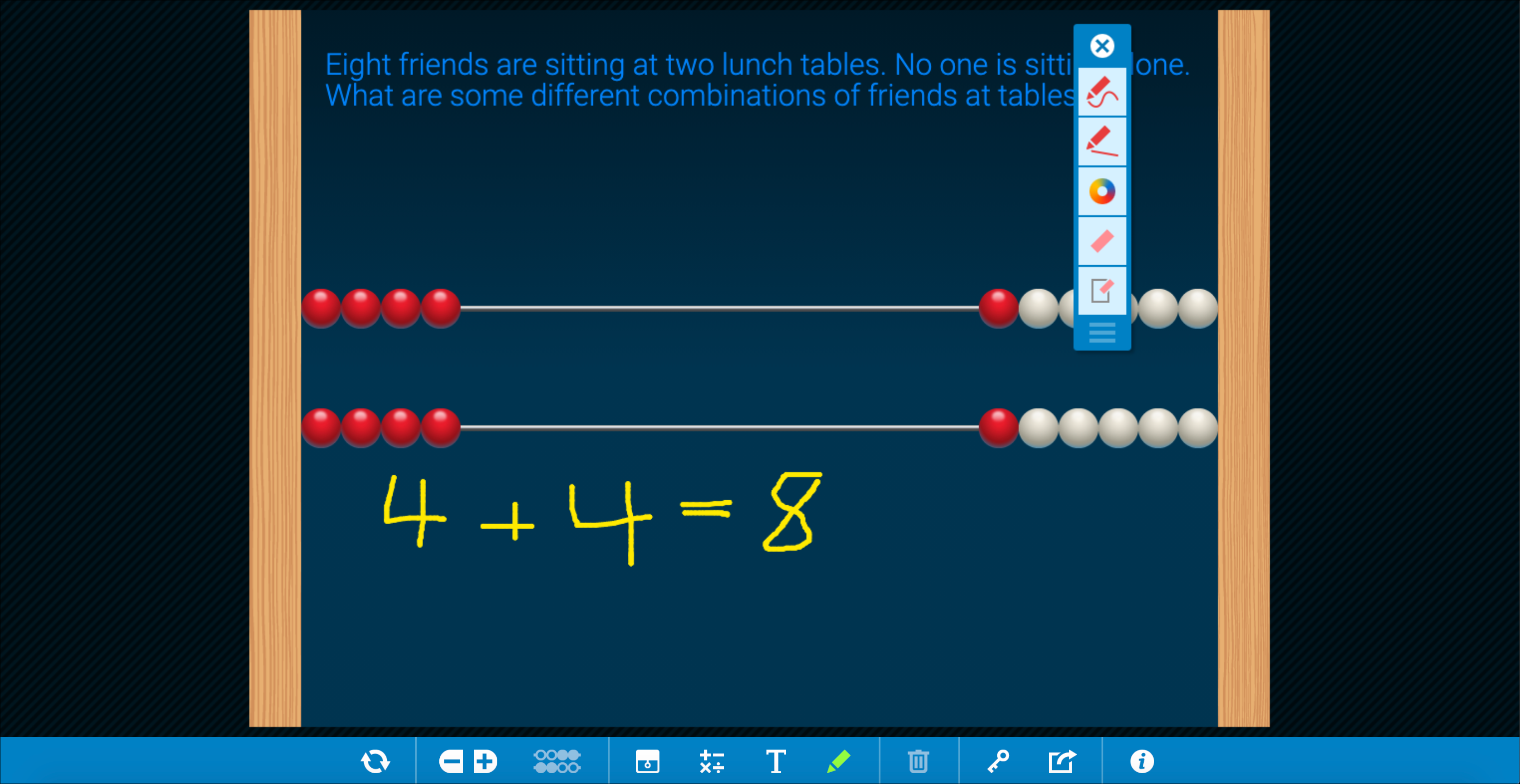
The model used above is the Number Rack, but the activity is presented in the Number Frames app as well. In the “For Teachers”section of each App Activity, you will find ways that students may begin to use the free MLC apps as tools for reasoning. These sample responses illustrate the various ways students may begin to represent and solve the task.
Zebra Stripes
This activity, recommended for 2nd and 3rd graders, provides an open-ended exploration and extension of even and odd numbers with a simple AB pattern. This task goes beyond even or odd identification, though, challenging students to think about generalizations related to the sums of odd and even numbers. The AB repeating pattern sets a structure to the possible solutions that many students will not anticipate but will come to realize through their investigation.
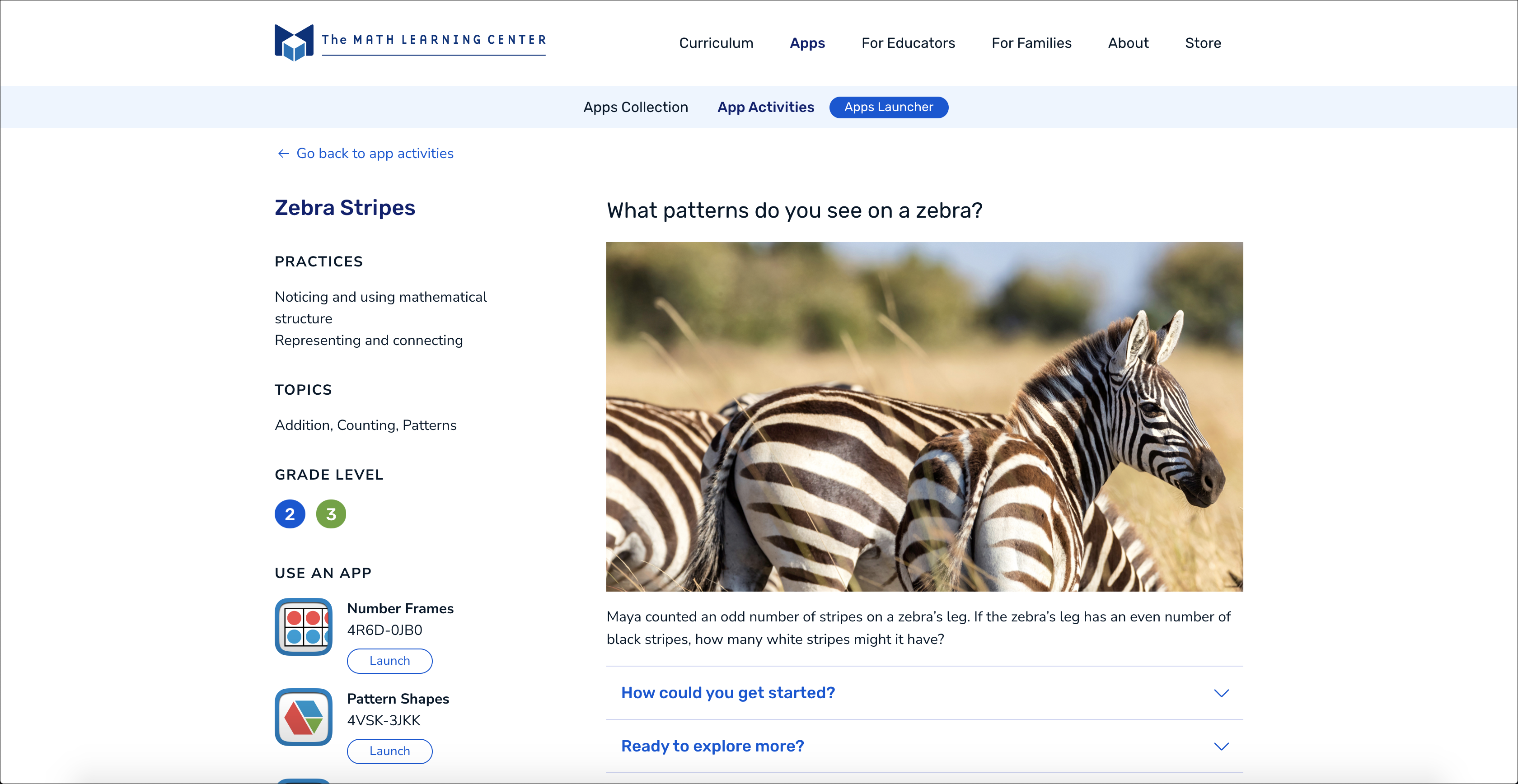
Watch for how students choose to represent an AB pattern of white and black stripes when solving this task. What do they notice about the number of white stripes and the number of black stripes when the stripes alternate in this way? What is true of these numbers, and can they use this structure to identify other solutions?
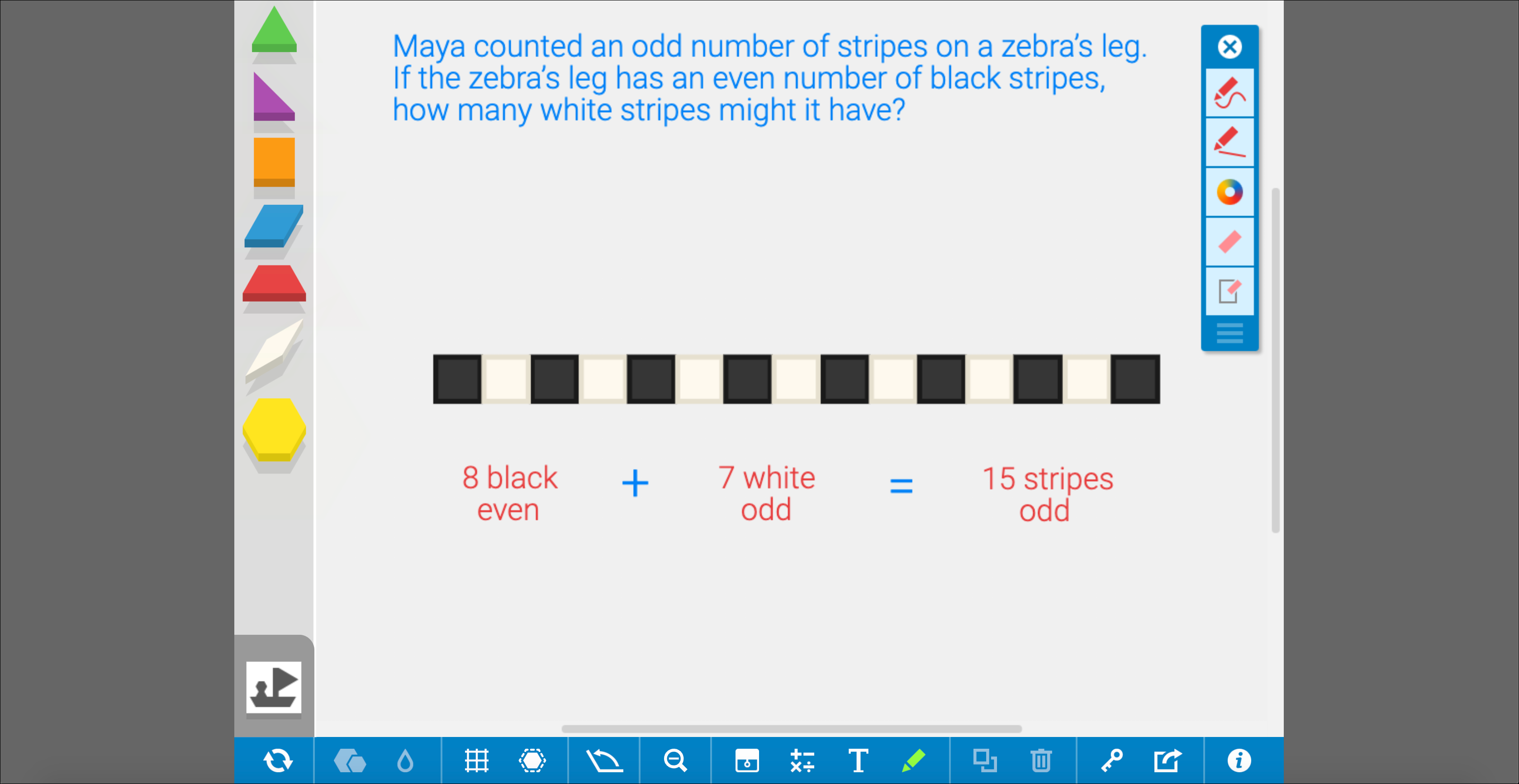
Above you see the activity in the Pattern Shapes app, but it’s also ready to use in the Number Frames and Number Rack apps. For students who might need it, questions in the “How could you get started?” section may help with ways to begin their exploration.
Replace the Shape
This problem-solving task fosters students’ algebraic reasoning by asking 4th and 5th graders to use the meanings of operations to compose and decompose a decimal number. Only one symbol represents a whole number, a constraint that requires students to work with decimals or fractions. And with three variables, there are opportunities to adjust quantities and find multiple solutions.
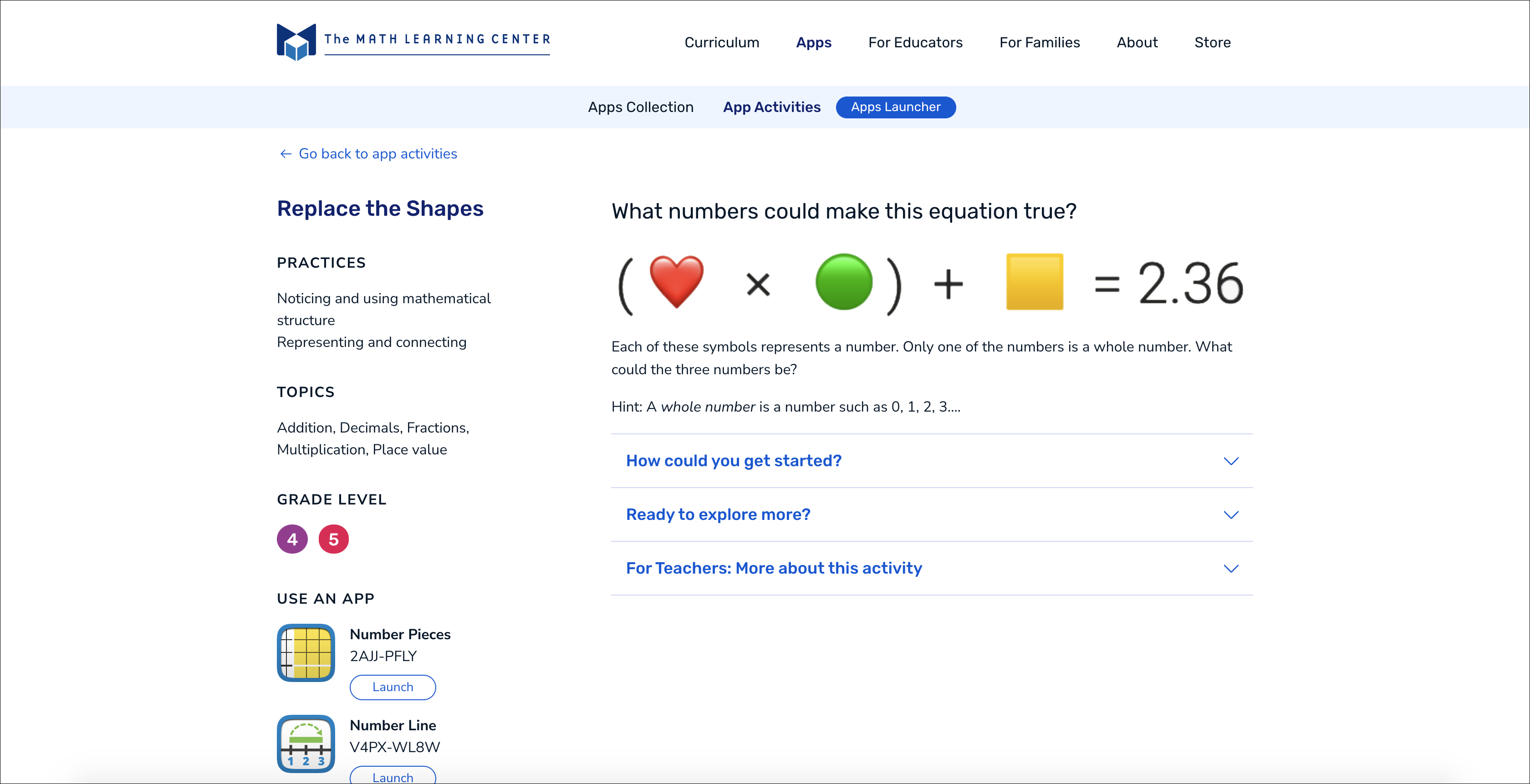
Since there are many ways to decompose 2.36, there are many viable solution combinations for the heart, circle, and square. Watch for how students use the apps to model both the numbers and the operations from the equation. With the multiplication of the heart and the circle, students may create a whole number of jumps of a decimal or fraction value before jumping by a yellow square to land at 2.36. Notice how the representation in the Number Line app below illustrates the relationship of the variables and the operations in the equation. From this representation, students could work backwards or forwards to find multiple solutions.
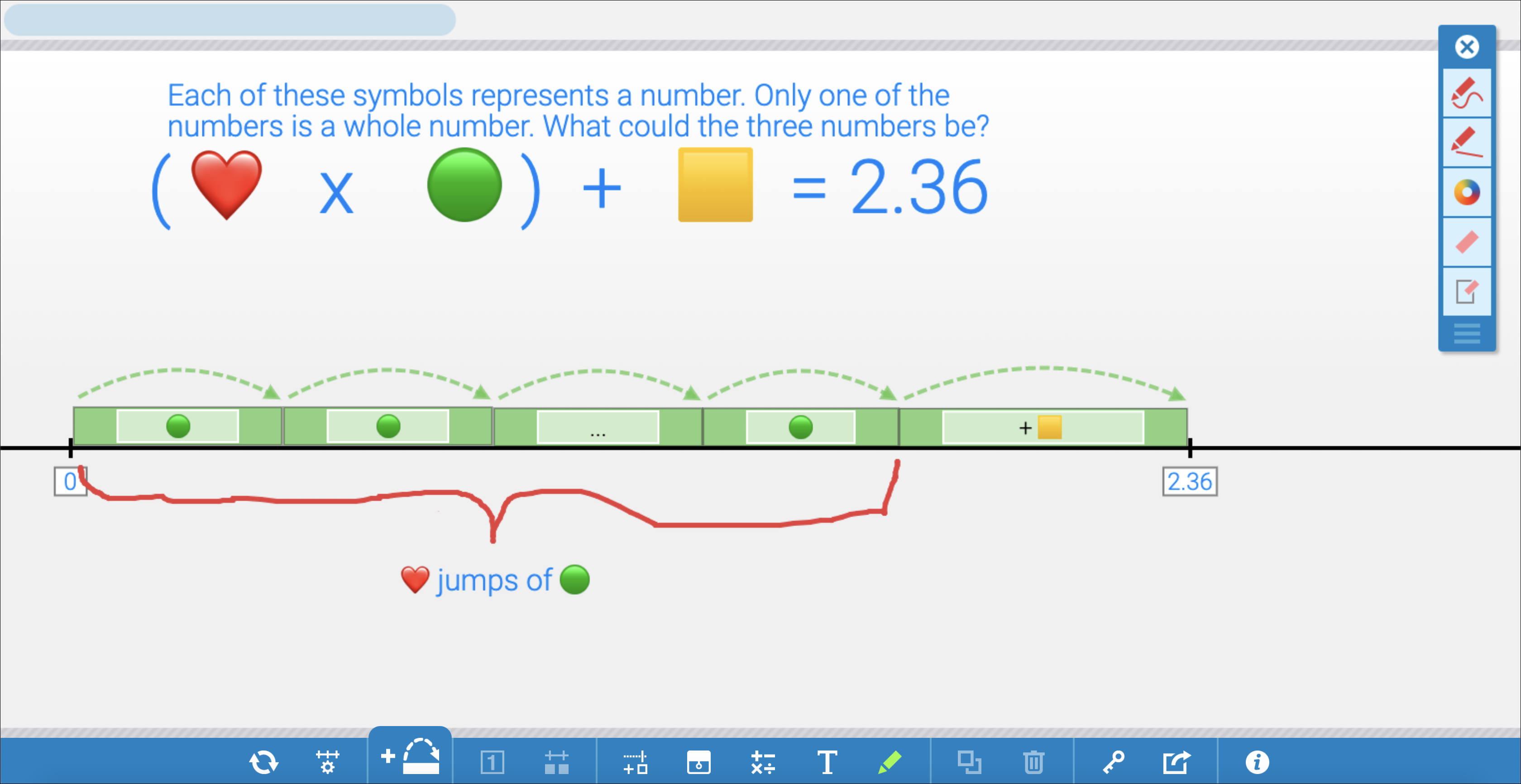
Above you see the version of this activity that uses the Number Line app, but it’s also queued up on the Number Pieces and Money Pieces apps. Students are often asked to compute with numbers we give to them. In developing App Activities, we made a deliberate decision to develop more open-ended tasks that provide students more opportunities for sense-making, reasoning, and investigation. With this task, see what happens when students have free rein to use any numbers they like!
The success of the #ShareTheMathLove and #SpringIntoMath activities we released in February and April demonstrated that students were eager to explore app-based problems. We are excited to bring you these new, challenging App Activities to enhance your math instruction. We encourage you to tag us on Twitter (@MLCMath) and Instagram (@MLC.Math) if you post pictures of your students’ work. Enjoy!
